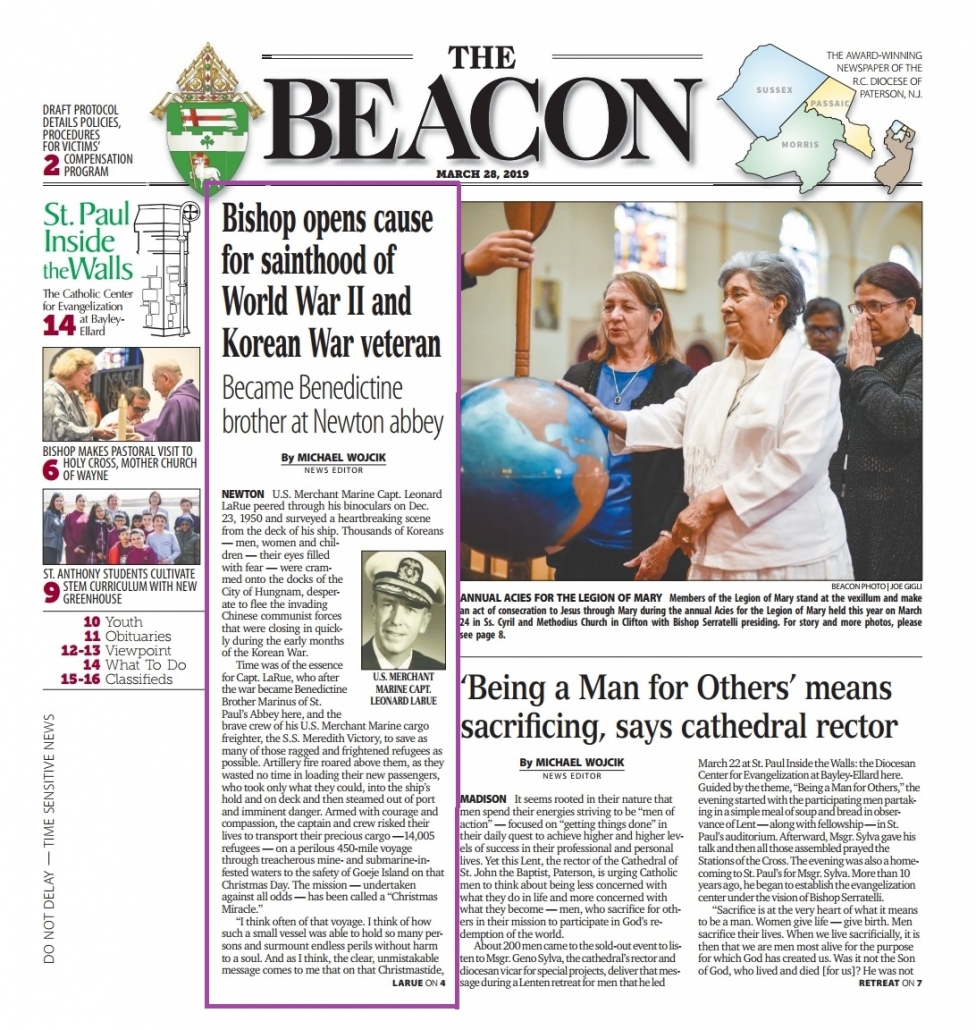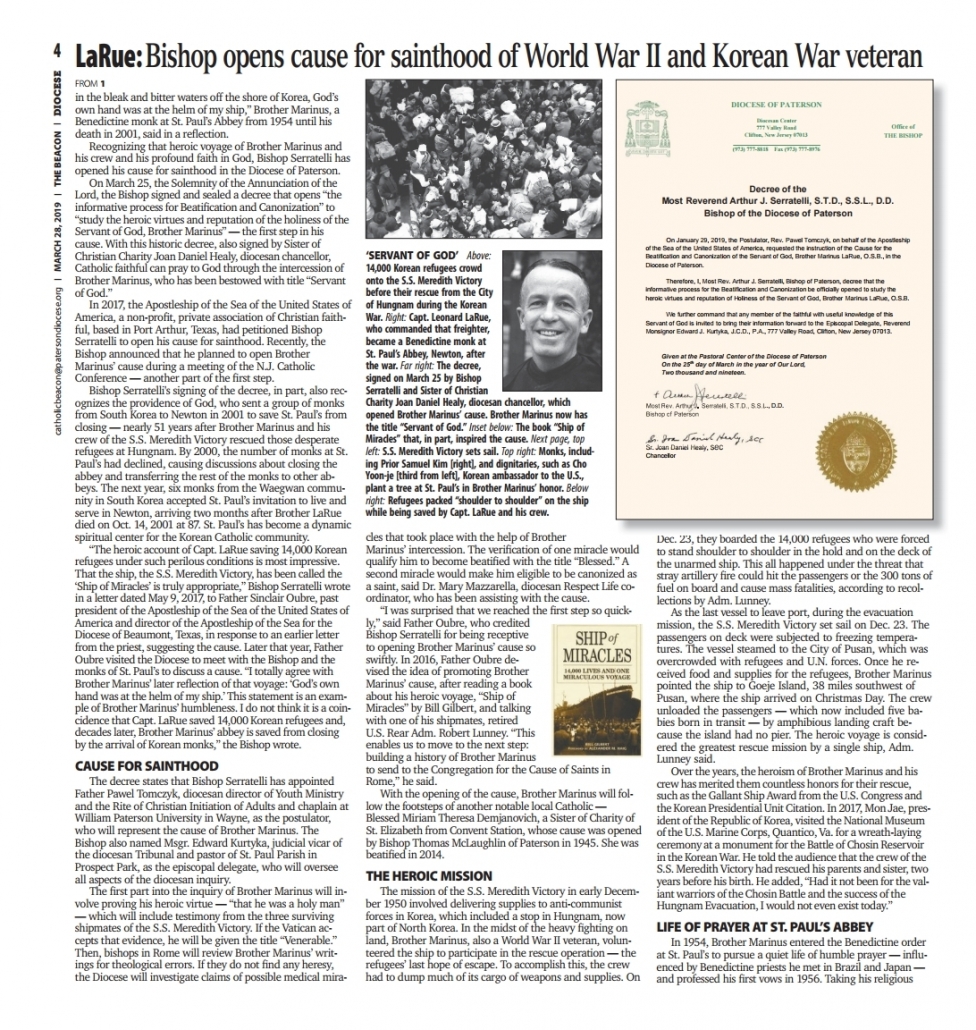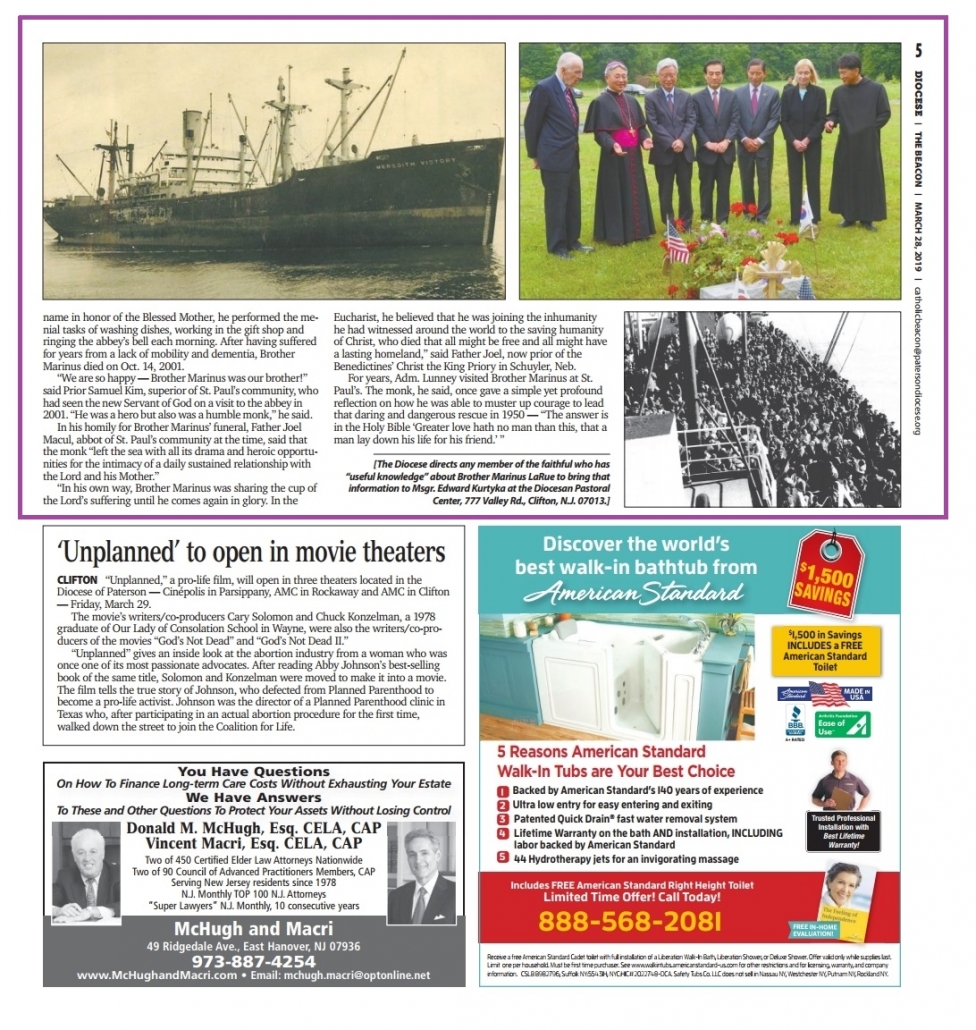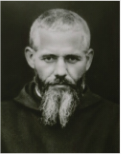Testes Fidei (2) -Fr. Lucius (Konrad) Roth OSB, Prior
/0 Comments/in Martyrs /by osbBorn 19 February 1890 in Weichtungen, Bad Kissingen District, Germany
Death October 1950 in Pyongyang Prison, North Korea
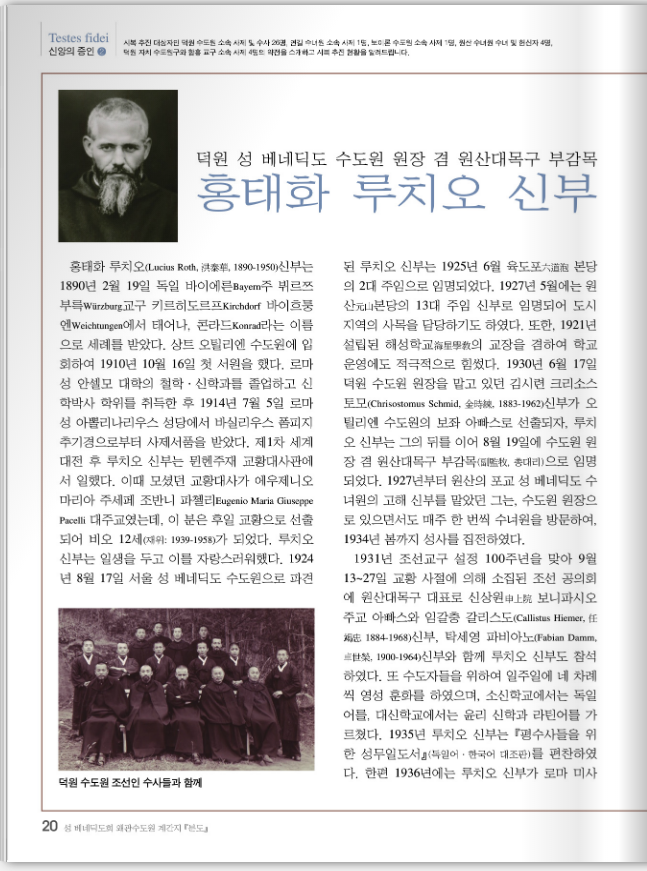
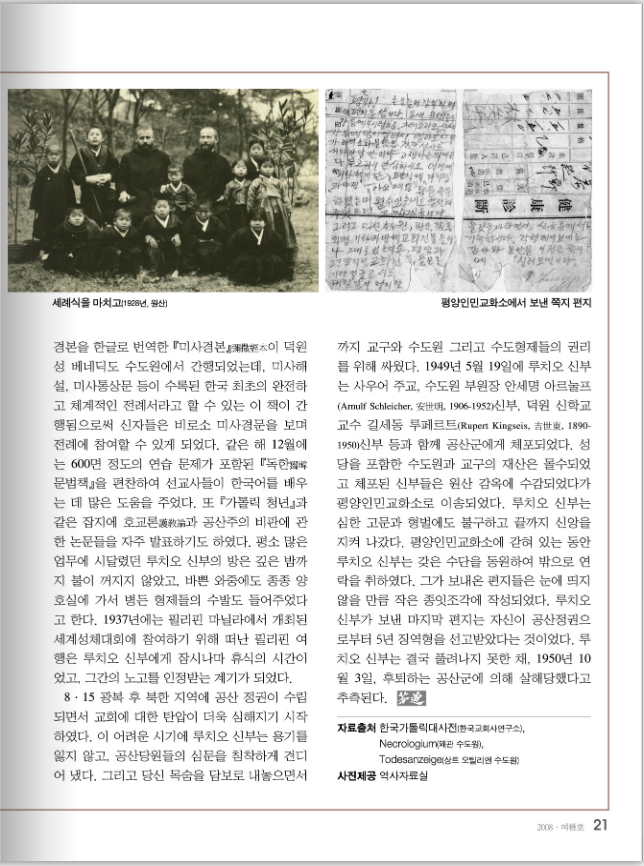
Testes Fidei (1)
/0 Comments/in Martyrs /by osb신앙의 증인 – 신보니파시오와 김치호 베네딕도와 동료 순교자들 (1)
Abbot-Bishop Boniface (Josef) Sauer OSB
Builder of the Benedictine Mission in Korea
Born January 10, 1877 in Oberufhausen, Hesse, Germany
Death February 7, 1950 in Pyongyang prison, North Korea
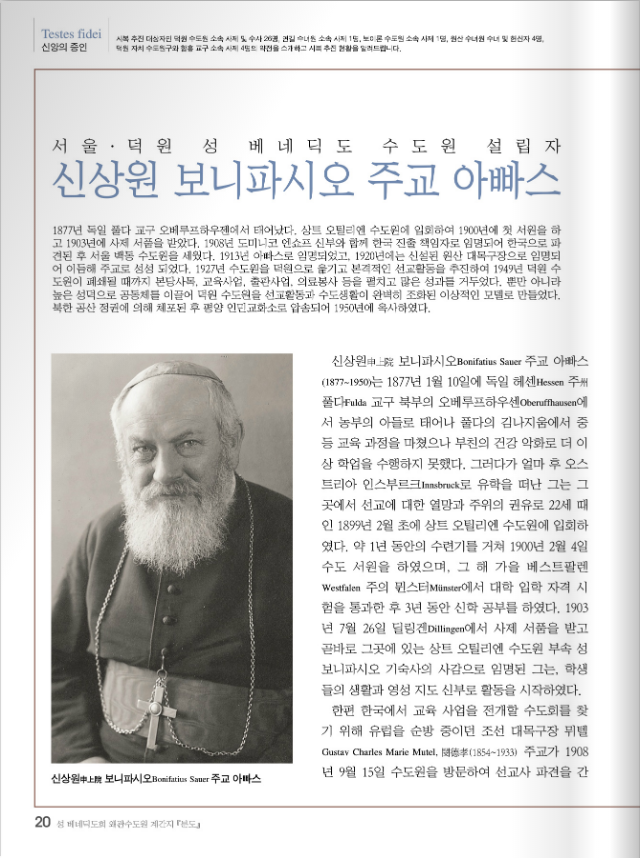
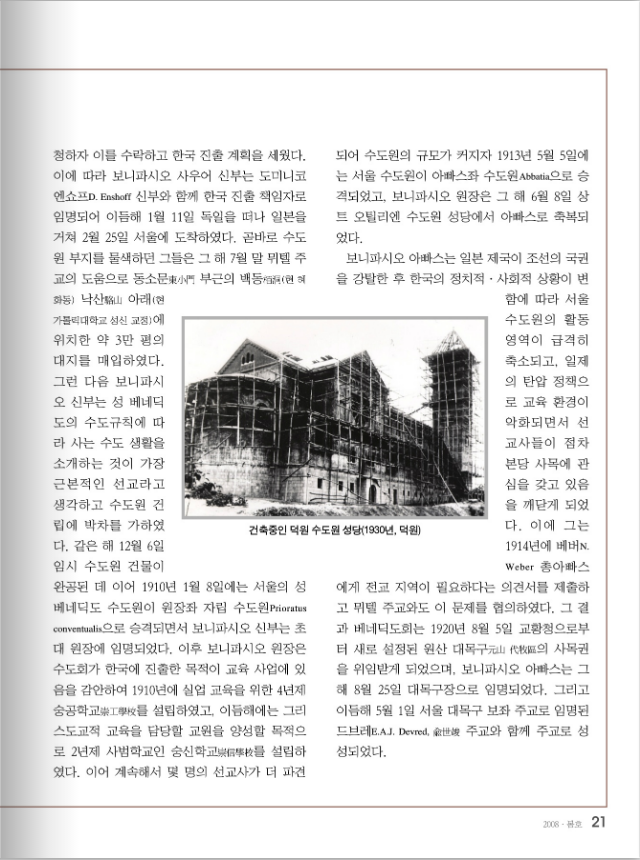
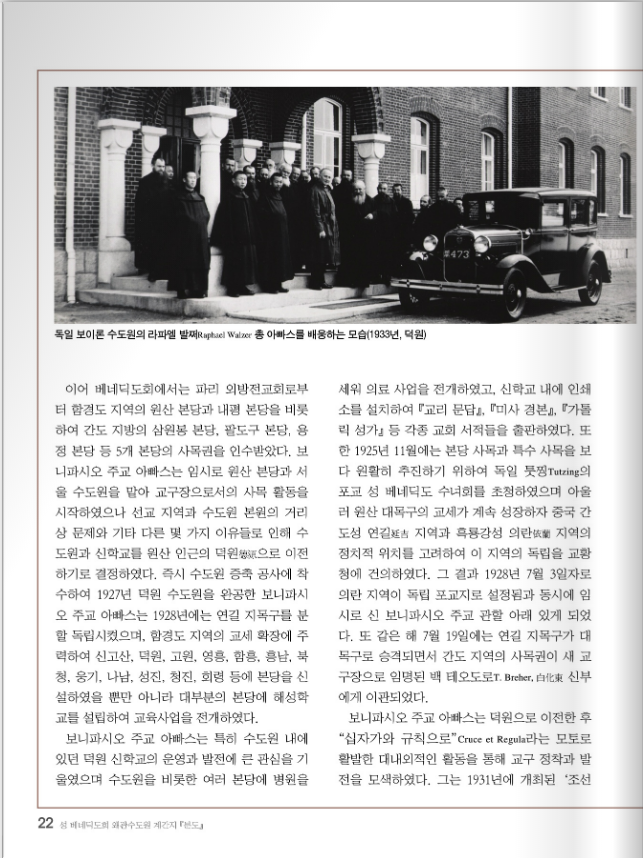
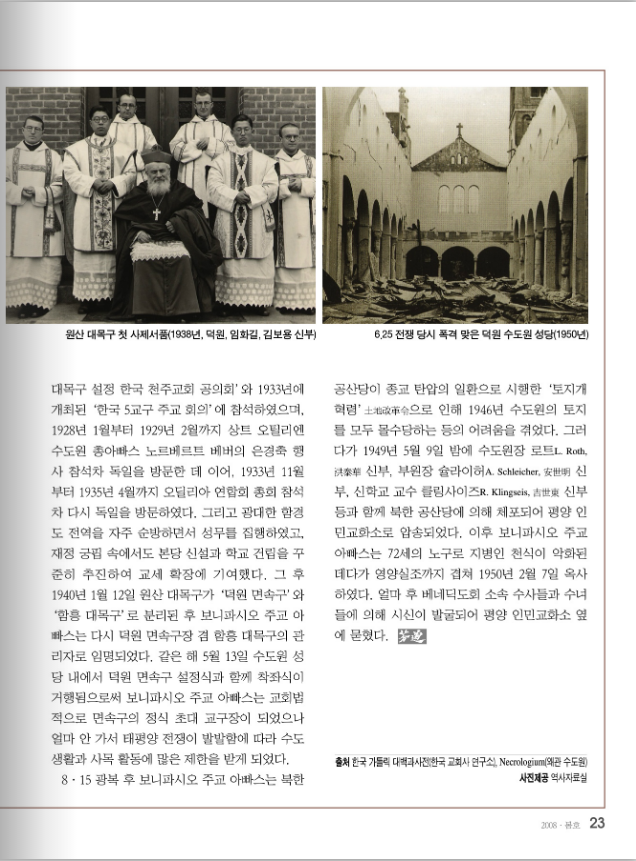
Obituary of Abbot Odo
/0 Comments/in Uncategorized /by osbIN CHRISTO OMNES UNUM SUMUS
†
Abbot Odo (Walter) Haas OSB
– Korean name: 오도환吳道煥
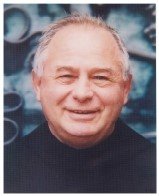
Abbot Odo Haas, the first abbot of Waegwan Abbey, died because of a chronic disease on 17 February, 2019 at thirteen minutes past three in the afternoon at Fatima Hospital in Daegu. We ask for your prayers so that Abbot Odo may find true peace in God. He was 88 years old and in the 66th year of his vows.
Abbot Odo was born on 4 March 1931 in Karlstadt am Main, a city within the Diocese of Würzburg. When he was baptized he received the name Walter. His parents were Otto and Dorothea Haas. It was the difficult time between the First and the Second World War when Abbot Odo came into this world. In 1937 he started to attend elementary school. Shortly after the war, in 1946, he began to study at the gymnasium. In 1952 he entered Münsterschwarzach Abbey. Here he received as his monastic name the name of Abbot Odo of Cluny Abbey which is famous for its reforms during the Middle Ages. He made his temporary vows on 12 September, 1952. Thereafter he began to study
philosophy at the Archabbey of St. Ottilien. Then he studied theology at Würzburg University where he concluded his studies with a licentiate. On 6 July 1958 he was ordained a priest by Bishop Dr. Josef Stangel. His first assignment as a priest were the parishes which at that time were cared for by Münsterschwarzach Abbey. In 1959 he started to prepare himself for the Mission in Korea.
He was sent into the Mission solemnly together with more than 500 other new missionaries from Europe on 10 October 1959 by Pope John XXIII. in the Cathedral of St. Peter in Rome. He boarded a ship and arrived in the harbour of Busan (Korea) on 7 March, 1960. After learning Korean he was assigned to the parish in Sangju as assistant priest. It was a ministry which did not last long because he was elected at the very young age of 33 years as the first abbot of Waegwan on 28 April 1964.
Abbot Odo has laid the foundation for Waegwan Abbey which because of its past history is closely related to Tokwon Abbey in North-Korea and Yeongil (Yanji) Abbey in China. Abbot Odo has made it clear from the beginning of his service as abbot that in the future there should be a Korean to lead the abbey in Waegwan. He did not wait long. After close to 7 years as abbot of Waegwan he resigned from his office on 24 February, 1971. Then the first Korean abbot was elected. It was Abbot Placidus Ri.
Soon after his resignation Abbot Odo went to Japan. He did so because of his missionary consciousness and also to create space for his successor. In Japan he joined a community of Benedictines in Meguro (Tokyo) who were also responsible for the djunct parish of St. Anselm. After learning Japanese Abbot Odo became the parish priest. The parish had a special character because it was a Benedictine Parish. It was instrumental in making Benedictine spirituality known in Japan.
Japan was not the last station for Abbot Odo. Another big missionary service was asked from him by the leadership of our Congregation of St. Ottilien, namely to start a new monastery in the Philippines. He went there in 1982 and stayed for 22 years. The location was the southern Philippine island Mindanao. It was there where he founded together with two confreres from Germany and two from Korea a Benedictine community in Digos which has grown into a Conventual Priory, a flourishing monastery, which is spreading through various means the Good News in the region.
In 2004 Abbot Odo came back to Waegwan for a year, – to recharge. Then, on 17 January 2005, he went – again at the request of the Congregation of St. Ottilien – to one of the 4 great churches in Rome, The Papal Basilica of St. Paul Outside the Walls, here he was also a member of the Benedictine Community which was in charge of the church. His assignment was to hear confession for the pilgrims coming to the church. On his confessional was a sign that German, English, Korean, Japanese or Cebuano (a Philippine language) could be spoken during confession. But Abbot Odo recalled that most of those who came for confession were Italians!
In August 2008 Abbot Odo returned to Korea. Here he served as chaplain for the Filipinos who came on Sundays to attend Mass to the Workers’ Cultural Center in Gumi which was run by Waegwan Abbey at that time. He also went to the Benedictine Monastery in Kumily, India, to assist the community there. There was also a time when he served as chaplain of the Benedictine Sisters in Tansu, Taiwan. Throughout his life he was and remained a missionary who was available when and were he was needed.
Up to the beginning of this year Abbot Odo was always present when our community prayed and meditated. He also had the wish to visit his German homeland one more time, but starting from 21 January his health faltered and he had to be transferred to Fatima Hospital of the Benedictine Sisters in Daegu where he died on 17 February.
‘Eternal rest grant unto him, O Lord, and let perpetual light shine upon him!’
Waegwan, 18 February 2019
Abbot Blasio Park and the Community of Waegwan Abbey

